Embarking on a training journey can be both exciting and challenging. As I’ve delved into various training programs over the years, I’ve gathered a treasure trove of effective tips that have elevated my performance and results. Whether you’re a seasoned athlete looking to fine-tune your skills or a novice eager to kickstart your fitness regimen, mastering the art of training is key to reaching your goals.
Training Tips
Consistency is key in any training program. I’ve found that sticking to a regular workout schedule helps build discipline and allows for steady progress over time. By showing up for training sessions regularly, I reinforce good habits and keep momentum going. This consistency also plays a vital role in preventing setbacks and maintaining a positive training mindset.

In my experience, understanding the progression and overload principle is crucial for improving performance. Gradually increasing the intensity, duration, or frequency of workouts helps challenge the body and stimulate further growth. By progressively overloading my muscles and cardiovascular system, I’ve seen significant improvements in strength, endurance, and overall fitness level.
Setting Realistic Goals
In my training journey, I’ve learned that setting realistic goals is essential for progress and motivation. By aligning goals with my abilities and aspirations, I can stay focused and track my advancement effectively. Balancing short-term and long-term goals is crucial for maintaining momentum and sustaining enthusiasm in my training routine.
Short-Term vs. Long-Term Goals
When setting training goals, I find it beneficial to differentiate between short-term objectives and long-term aspirations. Short-term goals help me stay motivated by providing quick wins and immediate satisfaction. For instance, aiming to increase the number of push-ups I can do in a week is a concrete short-term goal that keeps me engaged.

On the other hand, long-term goals enable me to envision my fitness journey holistically. Setting long-term goals, such as running a marathon in six months, gives me a sense of purpose and direction. By breaking down long-term goals into manageable steps, I can make steady progress towards achieving them without feeling overwhelmed.
SMART Goal Framework
I adhere to the SMART goal framework to ensure that my training goals are Specific, Measurable, Achievable, Relevant, and Time-bound. This approach helps me create clear and actionable goals that propel me towards success. For instance, instead of setting a vague goal like “get fit,” I define a SMART goal like “complete a 5K run in under 30 minutes within three months.”
By applying the SMART criteria to my goals, I can better understand what I want to achieve, track my progress effectively, and adjust my training plan as needed.
Effective Workout Routines

When it comes to training tips, Effective Workout Routines play a crucial role in achieving fitness goals. Let me delve into two key aspects that can enhance your training regimen.
Full Body Workouts vs. Split Routines
In my experience, both full body workouts and split routines have their benefits based on individual goals and preferences. Full body workouts are great for beginners or those looking to maximize efficiency as they target multiple muscle groups in one session. On the other hand, split routines allow for more focus on specific muscle groups on different days, which can be advantageous for intermediate to advanced trainers aiming for muscle hypertrophy or strength gains.
Incorporating Rest and Recovery
One of the most overlooked training tips is the importance of rest and recovery in a workout plan. Rest days are just as crucial as training days to allow your body to repair and grow stronger. Overtraining can lead to burnout, injuries, and a plateau in progress. It’s essential to listen to your body’s signals and incorporate rest days into your schedule. Additionally, factors like good nutrition, hydration, quality sleep, and active recovery techniques can further enhance your body’s recovery process, aiding in better performance during training sessions.
By understanding the significance of balancing workout intensity with adequate rest and recovery, you can optimize your training tips for long-term progress and overall well-being.
